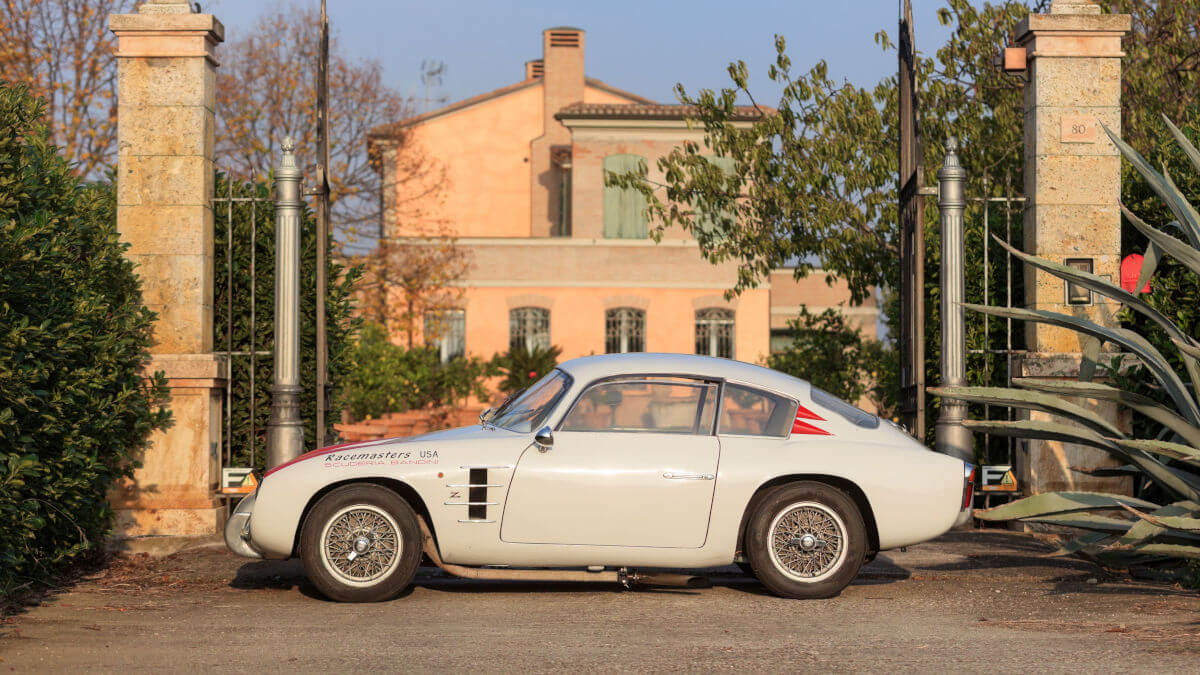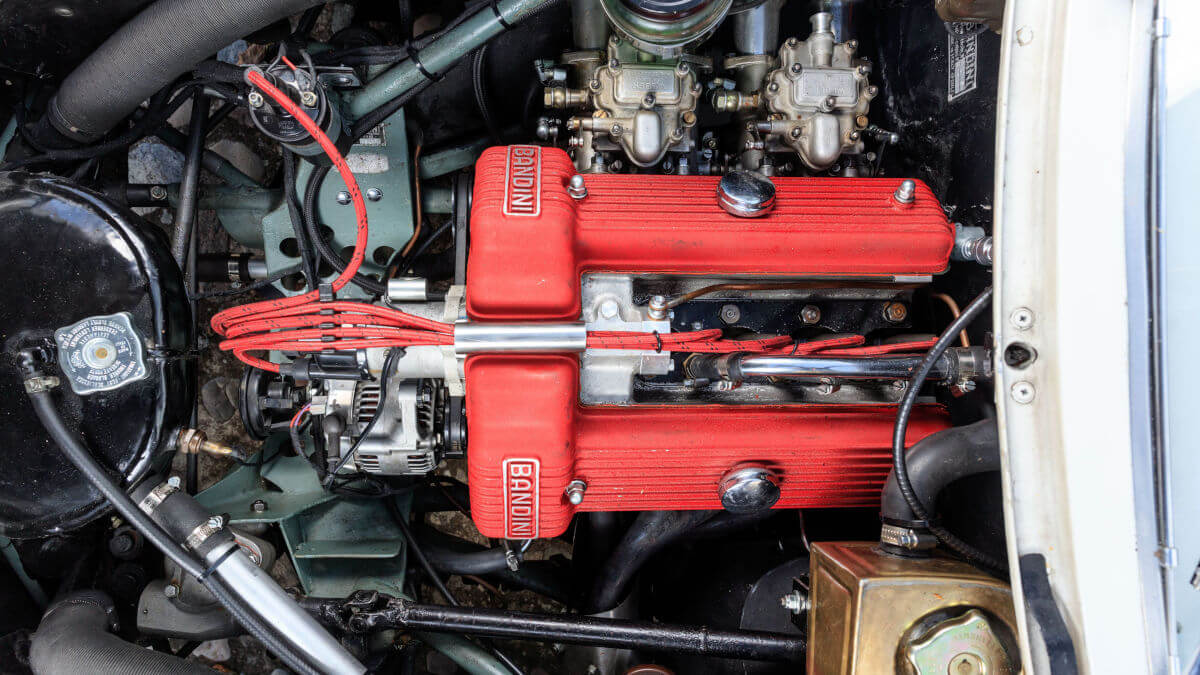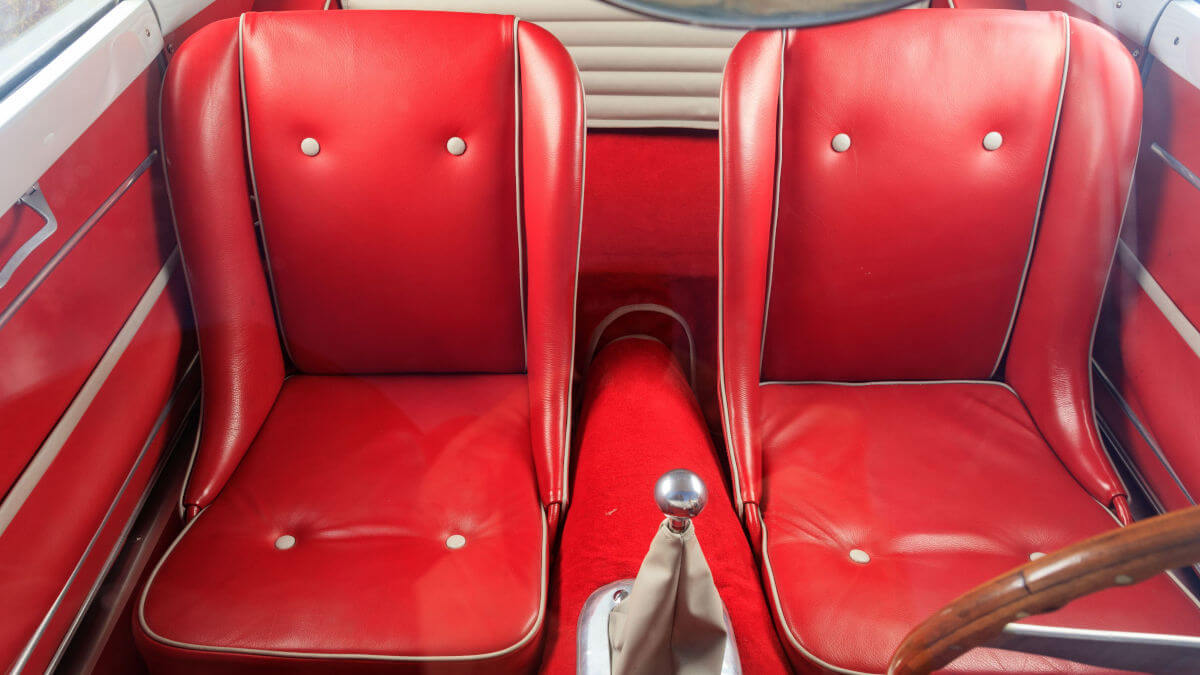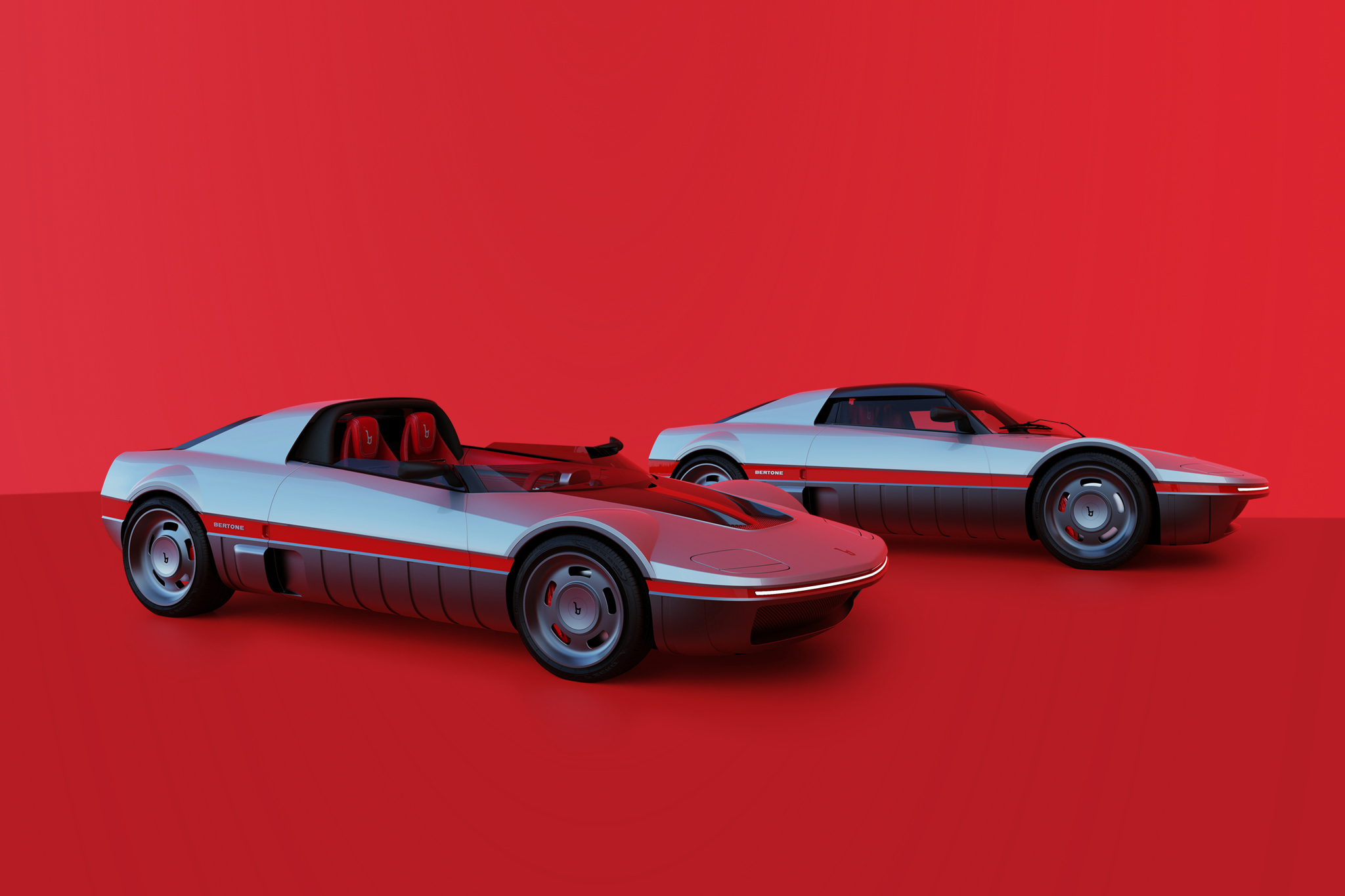Bandini 750 GT Veloce Zagato
After World War 2, there were numerous small sports car brands in Italy. Especially in the field of the so-called Etceterini cars with engines of less than one liter capacity, there were various vehicles. Technical components and chassis from Fiat often served as the basis. Ilario Bandini founded his company in 1946 in his hometown of Forlì. He used tubular chassis made of aviation steel and formed aluminium bodies over them by hand. From the beginning of the 1950s, demand for his sports cars increased. In particular, sporting successes with the Siluro model in the SCCA championship in the USA ensured this. In addition, there were victories at the Mille Miglia and good class results at the 12 Hours of Sebring and the 24 Hours of Daytona. Ilario Bandini liked to drive his race cars himself. Thus, he took part in more than 60 racing events on tracks and hillclimbs. In the classes up to 750 cc and up to one liter displacement, he took 19 victories and 18 podium finishes.
Car designer until death
Until the 1960s, the sports cars were successful worldwide. In addition, there were victories with a Formula Junior car, which was presented in 1959 and continuously developed. Ilario Bandini continued to build one-offs and small series well into the 1980s. In the process, the engines grew up to 1.5 liters. His final creation was the 1000 Turbo 16V from 1992. A few weeks after its debut, he died at the age of 80. At the same time, the company’s history came to an end. To this day, there has been no attempt at revival. As a result, the legendary reputation couldn’t be damaged either. His hometown renamed a central square Bandini Plaza ten years later. In his former workshop, the Bandini family now maintains a small museum with ten Bandini racing cars as well as the Bandini Archive. The latter has all production data and drawings.


















































In the bare chassis through Italy
While the vast majority of his cars were open one- or two-seaters, Ilario Bandini specifically planned to build a coupé for the GT class in the mid-1950s. The underlying frame was made of elliptical steel tubes and weighed only 27 kilograms. The kerb weight was 670 kilograms. Bandini gave it the chassis number 1001B, which was probably simply taken over from the engine number of the Crosley four-cylinder used. Thanks to an in-house developed cylinder head with two overhead camshafts, 67 hp were available from 747 cc of displacement. According to Dino Bandini, nephew of the company founder and director of the museum, Ilario drove the bare chassis to Zagato in Turin on its own wheels. A trip of around 290 kilometers, which he made sitting on a makeshift box. Nowadays, the headlines about such an action would probably be so serious that the company would have to close its doors.
Racing history in the USA
The coupé bodywork designed by Zagato was already familiar to fans in a similar form from the Moretti 750. At the end of 1955, the Bandini 750 GT Veloce stood on its wheels. A year and a half later, the car won the Concorso di Eleganza in Rimini. In early 1959, Bandini shipped the one-off to the USA, where it became part of the factory-supported Racemasters team. With Fred Haynes and Victor Lukens at the wheel, the coupé took part in racing events at Watkins Glen, Bridgehampton, Daytona and Sebring. After a minor racing accident, the car was taken to Jim McGee’s garage and workshop. Since Victor Lukens, the car’s owner, died as a result of his drug use, the planned repair never took place. Instead, the small sports car stood under a tree in the workshop’s yard for almost 13 years. In 1978, Jerry Greaves bought the wreck and started looking for parts for a restoration. Dino Bandini bought everything from him 20 years later and carried out the work in Italy.
Completely restored
After the damaged aluminium parts of the body had been replaced the the original engine had been overhauled, the Bandini was given a paint job true to the original. This partly reproduces its appearance as a racing car in the USA. Its rarity and excellent condition make the car ready for classic races such as the Mille Miglia and Concours events. In fact, there is already an invitation to the Concorso di Eleganza at Villa d’Este this year. However, a new owner will decide whether the unique Bandini will appear there. The Bandini Museum decided to put it up for auction. For this purpose, the Paris auction house Artcurial was chosen for the Retromobile on 18 March. Between 400,000 and 600,000 € are expected. A lot of money for a small vehicle, but not much for a unique racing car.
Images: Artcurial, Peter Singhof, Dino Bandini Archives




